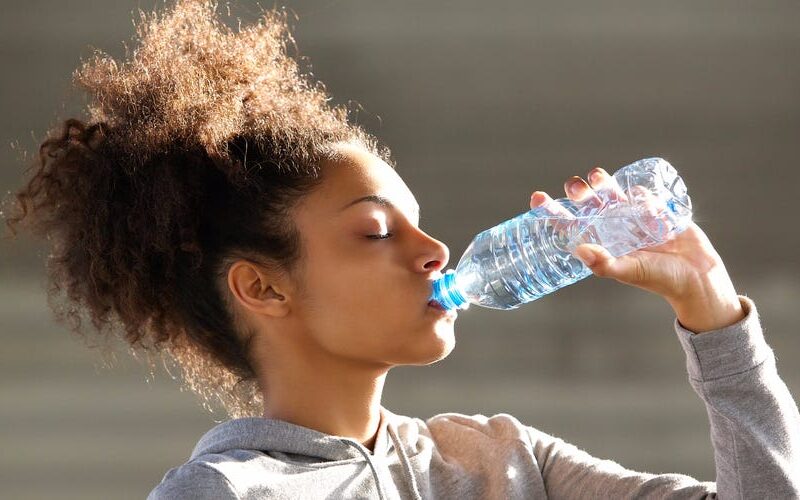Why Water Bottles Are No Longer Cool!

Introduction
Water bottles are no longer cool. Water bottles have been around for a long time, but recently they’ve become something of a joke. People take them to places where there is already an abundance of water like the beach, in order to get free refills from nearby restaurants or stores. Some people even use them as drinking glasses! But do we really need those plastic bottles? Or can tap water do just as well?
Plastic is hurting the environment.
The average lifespan of a plastic water bottle is about 20 to 25 years. This means that if you buy bottled water today, it will likely be around for your grandchildren’s grandchildren. After this time frame, the plastic bottle will begin to break down into small pieces of harmless debris called microplastics.
Unfortunately, microplastics are polluting our environment in large quantities—and they’re not going away anytime soon. Plastic does not biodegrade; rather, it photodegrades into smaller and smaller pieces over time until it becomes invisible to the naked eye (unless you have infrared vision like Superman). While plastics do eventually decompose after thousands of years when exposed to sunlight or high heat sources like fire or industrial processes—like recycling—they do so at an extremely slow rate compared with their short lifespan on earth.
A report published by BioCycle found that Americans recycle only 11% of their bottles each year (with an additional 14% being reused). This means that 87% go straight into landfills where they can take up as much space as two football fields!
Americans have an obsession with bottled water.
Americans have an obsession with bottled water.
We consume more bottled water per capita than any other country in the world, drinking about 50 billion bottles of water a year and spending $15 billion on it every year—and that’s just what we buy at stores. Bottled water is not only a huge part of our domestic market but also has a strong presence internationally as well. As recently as 2013, Americans accounted for almost one-third of global sales of packaged drinking water.*
Why are Americans so eager to spend money on something they can get free from their taps?
Most brands of bottled water are filtered tap water.
Most brands of bottled water are filtered tap water. Tap water is often better for you than bottled water because it’s regulated by the EPA to be safe, whereas bottled water is not.
Bottled water costs more per gallon than gasoline, but there’s a reason for that: It can be up to 2,000 times* more expensive than tap! That makes sense when you think about how much it costs to transport and package all those plastic bottles—and then throw them away after just one use (or two if you’re lucky).
Tap or faucet? Bottled or tap? I’ll leave it up to your conscience which one sounds cooler—but please don’t forget where they come from!
You may not know what kind of water you’re drinking.
You may not know what kind of water you’re drinking.
The FDA regulates bottled water, but the Environmental Protection Agency (EPA) does not regulate it at all. In fact, they don’t even list it as a category on their website. This means that the FDA doesn’t require any testing for contaminants like lead or pesticides in bottled water products unless someone files a lawsuit against them for doing so (and there haven’t been many). However, if you look at the FDA’s website, there are strict guidelines for how to label and advertise your product: “If you sell or distribute bottled water labeled ‘Drinking Water’ under sections 403(w)(2)(B) or 403(f)(2), it must meet all applicable requirements in 21 CFR part 165.”
Bottled water’s environmental impact goes beyond bottles and litter.
Unfortunately, there’s more to the story of bottled water’s environmental footprint than just bottles and litter. Bottled water uses a lot of plastic, which means that millions upon millions of pounds of it are being manufactured every year. And while some people have proposed that this excess plastic should be recycled, the numbers don’t lie: only about half of all PET bottles get recycled in the U.S., according to this recent study from the Container Recycling Institute (CRI).
But why aren’t we recycling? The CRI explains that part of this has to do with how difficult it is to recycle PET — because it’s made from polyethylene terephthalate (PETE), many recyclers will reject your bottle if there are any traces at all left from its previous life as soda or juice. You might think that would mean you could just rinse out your bottle before putting it in your bin for pick-up by local waste management services—but even though rinsing won’t ruin its recyclability, it’s still not always easy or convenient enough for us busy Americans. So instead we leave them lying around on city streets and park benches; they pile up next door at work; they show up at our neighbors’ doorsteps with handwritten notes asking them if they’d mind taking them away…
And sometimes these bottles end up in landfills—or worse: in our oceans.*
We don’t need to drink 8 glasses a day.
We’re often told that we need to drink eight glasses of water a day. But is this really true?
What is the Recommended Amount of Water to Drink Per Day?
The Institute of Medicine recommends that men consume roughly 125 ounces per day and women drink around 91 ounces per day. These numbers can vary depending on your body mass index and other factors, but they give you an idea of how much water you should be drinking in general. The recommended amount isn’t based on scientific research—it’s just what doctors have come up with over time based on common sense.
How Much Water Does Your Body Need?
Your body needs water for many functions, including digestion and cellular maintenance (1). It also helps transport nutrients throughout your body so they can be used as fuel sources by cells. Without enough water, these processes will slow down or stop altogether—which won’t kill you in the short term but could create problems down the road if left untreated (2). Why do people say we need 8 glasses per day? It seems like an arbitrary number because it doesn’t account for any other factors besides age (3). If anything, this threshold should change depending on how active someone is each day because activity increases thirst sensation so more fluids may be needed during exercise sessions than when someone sits all day long!
Drinking bottled water is bad for the environment and can be bad for your wallet, too.
Bottled water is expensive. This one’s pretty obvious, but it’s worth noting anyway. Bottled water costs between $0.60 and $5 per gallon—a significant amount when you consider that many people drink anywhere from 1 to 2 gallons of water each day. That means that if you’re spending more than around $1 per day on bottled water, you’re spending more than twice as much as the cost of tap water!
In addition to being expensive, drinking bottled water can be bad for the environment because it takes energy to produce and ship all those bottles around the country (or world). So not only do you have an upcharge cost for every bottle of H2O you chug down—you also needlessly increase greenhouse gas emissions by using this method instead of simply turning on your tap at home or visiting your local public fountain for a refreshing splash in the face or two!
Conclusion
If you’re looking for a healthy, refreshing beverage that won’t hurt the environment or your wallet, there are many options. Tap water is always an option! If you want something different than tap water, try filtered water from home or your local grocery store. There are plenty of choices that might be better for your health and the environment than bottled water will ever be.



